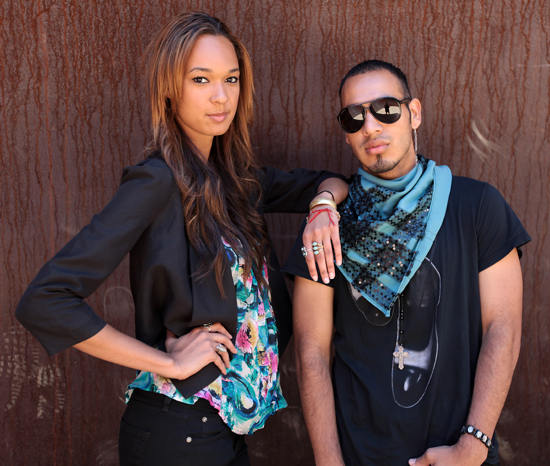The prerequisites of becoming a fashion model are rigid: One must be at least 5 feet 8 inches tall, have a decent face and subsist on a diet of grapes and nuts, unless one has a genetically gifted metabolism.
For the models of the Fashion and Student Trends club at UCLA, there is no sense in this rigidity.
Instead, the club chooses models on the basis of pure vibrancy and energy and an impressive runway walk, all of which are to be displayed prominently in the annual FAST fashion show on May 26.
Not only do they have to project a ferocious strut, they have to project a personality through FAST photoshoots, which range from beauty shots of different makeup styles to a hazy day on the beach.
Fourth-year Chicano studies student Hector Marquez, the modeling director of the organization, has taught the models to strut and pose since joining the club his second year.
Since then, he has become a seasoned veteran in picking and choosing the best walkers from the gaggles of students trying out.
“I think that when it comes down to critiquing and choosing who will model and who will not, we really look for energy, because the day of the show, you’re walking and you’re not really saying anything, so your personality really has to come through from the way you present yourself on the runway,” Marquez said.
Second-year English student Marissa Cohnen, who is equally as towering as Chanel Iman, started modeling for FAST during her first year, where she participated in the FAST fashion show and was approached by an agent to do other modeling jobs on the side.
“When I joined FAST, you kind of get that experience where you’re around people who enjoy fashion much as you do and you realize, “˜Wow, other people have the small passion that I do,’ and it’s really exciting when it becomes something outside of just a club and applicable to real life,” Cohnen said.
Marquez and Cohnen demonstrate this application to real-life in a coaching session where they showcase a runway walk called “the snake,” as Cohnen walks down an imaginary catwalk, mimicking the slinkiness of the reptile. Marquez said this walk is very important when walking in long gowns, where falling on one’s face is not uncommon.
“It’s way harder than it looks,” said second-year English student McKenzie Dowler, another model in the club. “There’s a lot more training, not just walking. There’s a whole bunch of things to think about while you’re walking so it’s a way to learn to multitask.”
Another would-be walker in the fashion show is second-year microbiology student Ian Pearson, who joined FAST this year and has, up until now, participated in practice sessions for the fashion show.
“I was basically just looking for something to do besides academics, and it sounded pretty fun and unique. I tried out for it and it was pretty cool,” Pearson said.
This year, the crop of students trying out to model came out to around 200 people.
Like the reality show, “America’s Next Top Model,” Fashion and Student Trends goes through a process of choosing models from a sea of many.
“There’s a panel that we choose who goes through to the second round and then after that, we have designers choose. We have two stages which are tryouts and callbacks,” Marquez said.
Once called back, models receive training and constructive criticism, with the occasional walk-off with models against one another.
“It’s more of a playful competition. We have walk-offs in the club, but it’s more of an evaluation of progress. It’s more of comparing yourself to each other to gain more knowledge and get better with your walk and it’s really helpful and encouraging,” Dowler said.
Unlike the nature of “Top Model,” the club’s objective is not to create drama but to create the more realistic side of working together.
“I guess you can say I am the Tyra Banks and Miss J. of FAST, but it’s all an experience and I don’t think we’re there to be competitive,” Marquez said. “We’re there to work together for a show.”
